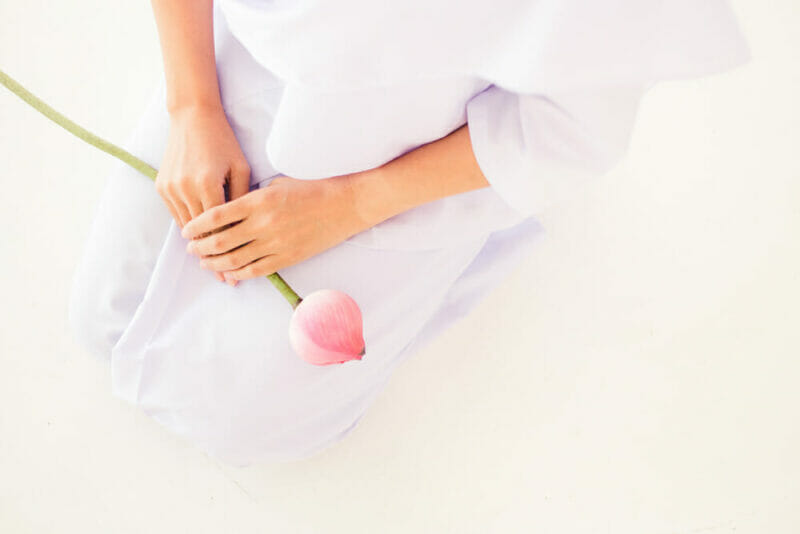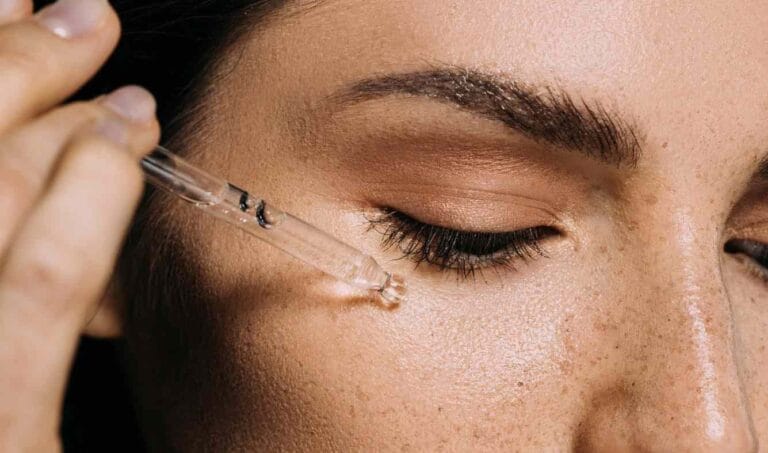What to Wear to Buddhist Meditation? – A Guide for Mindful Dressing
The dress code for a Buddhist meditation is typically simple. There are no strict rules or guidelines, but people usually wear comfortable clothes that cover their body.
In this blog post, I’ll address some of the questions you might have about what to wear for your next Buddhist meditation session.
Buddhist meditation is a form of self-care that can offer an escape from the outside world. The right outfit to wear for Buddhist meditation may not be as important as one would expect, but it does have an impact on your experience and should be taken into consideration.
One important reason for wearing particular types of clothing during a meditation practice is to help cultivate mindfulness in everyday life.
What to Wear to Buddhist Meditation?
Meditation requires no particular clothing. When you are sitting in meditation, wear clothes that will make you feel comfortable and also focused.
Any dress is acceptable; however, traditional Zen Buddhist meditation clothes such as robes, gowns, or other loose-fitting clothing could be beneficial.
This type of clothing relaxes your body and promotes mental concentration, both of which are necessary for effective meditation.
Zen Buddhist Clothing Items
01. Zen Meditation Robes
Zen robes are very useful when practicing meditation, especially during the apprenticeship stage. The gown is essentially a long, loose piece of clothing.
It is traditionally used for meditation. These robes are also more common than other garments during various religious ceremonies.
02. Kimono
In Japan, the kimono is the most formal clothing for meditation. The dress is often seen in religious ceremonies and at festivals.
Besides being worn for meditation, a kimono can also be used as a garment for everyday wear or to sleep in.
03. Samue
A Buddhist monk wears samue, especially when working in the field or on the temple grounds.
In recent years the samue has become very popular with meditation enthusiasts in Western countries.
04. Kasaya
Kāṣāya is the Buddhist term or Sanskrit word for a monk’s robe. It is similar to its Pali equivalent, kasāva.
Monks and nuns who have been fully ordained wear these robes. Kasaya’s three primary pieces of cloth are the antarvāsa, the uttarāsaṅga, and the saṃghāti together forming the “triple robe,” or ticīvara.
05. Rakusu
Rakusu are miniaturized versions of kāṣāya worn around the neck like bibs and are probably of Chinese origin.
Generally, as far as I can tell, the rakusu was used in China for a certain period of time and then fell out of use.
Nonetheless, the tradition lives on in Japan, where it is now a traditional garment worn around the necks of Zen monks.
06. Hooded Meditation Cloaks
Hooded meditation cloaks, in contrast to all other meditation clothes, are gaining in popularity. Because it’s useful for many different kinds of meditations.
A hoodie adds beauty to the dress and allows for deep concentration in meditation. It is best to wear a hooded meditation cloak on cold winter mornings for long meditation sessions.
There is not really any specific article of clothing that is indicative of Buddhist meditation attire though many people will opt to wear zen textiles such as zen robes, kimonos or Kāṣāya.
Some Buddhists advocate for no shoes and using a zafu to sit in meditation form such as seiza (back straight, legs parallel).
Buddhist Nuns Meditation Clothes
The basic need of meditation attire is to wear calm, smooth, radiant colors. Therefore, the attire gives a feeling of calmness to the person and the audience. So here we will discuss what the Buddhists nuns used to wear during meditation. Stay with us.
Traditional Dress of Buddhist Women
Buddhist nuns used to wear clothes that reflected simplicity and calm. So, they mainly chose to wear light pink and white robes, representing their efforts for a modest and spiritual life.
In addition to the robes, the Buddhist nuns wear alms bowls around their necks. These bowls are significant in the Buddhist tradition and are used during dawn almsgivings. Their basic purpose is to provide the monks and nuns with food and other necessities to help them in their faithful journey.
Bhutan and Nepal Robes
In Bhutan and Nepal, the female nuns wear maroon robes with a slight shade of red. This attire showcases a close resemblance between their Buddhist practices and Tibet. However, these robes are the basic outfits for meditation practitioners in these areas.
Living in chilly mountainous terrain, the worshipers used to wear an undershirt or vest with cap sleeves underneath their robes. This sleeveless shirt, which is mainly maroon (sometimes red), saved them from the cold environment and gave them a sigh of warmth and relief.
Actually, the overall clothing consists of upper and lower robes, making it the perfect outfit for the nuns. Furthermore, the worshipers wrap a shawl around one arm to honor their outfit spiritually.
Asian Robes Significance
Asia is a blend of different cultures and traditions, all of which have their colors of representation. While walking, your eyes interact with many vibrant colors, like the mural painting in Bhutan and decorative lights in Vietnam. Similarly, you also came across nuns wearing colorful robes. These robes show their religious belief and the type of Buddhism they follow.
More Tips on Buddhist Meditation Attire
Attending a Buddhist meditation session does not entail any specific clothing requirements, but I can offer you two specific guidelines: a) be comfortable and b) keep it simple.
While comfort is subjective, here are some general tips on dressing for meditation sessions: Wear something loose-fitting so as not to restrict breathing or blood circulation; nothing too heavy like wool or thick cotton.
And try not to wear anything with bright colors because they may distract others from the practice. The second guideline is simplicity. Choose clothing that does not have any distracting patterns such as stripes or large graphics.
It is also important to not make a lot of noise by wearing materials that might rub together. Avoid wearing jewelry as well as restrictive clothes like tight jeans or pants.
Loose fitting cotton apparel is often used because it breathes well.
If you don’t have any clothes that will allow you to sit comfortably on the floor then wear something with stretchy fabric or yoga pants so that your body won’t be restricted during your time of contemplation.
The most important rule is not to wear anything too tight fitting because this may cause discomfort and distract from achieving a deep meditative state.
The top covering your torso can be either a long gown or a button down shirt with sleeves. The skirts should be long enough to cover the knees at all times.
In traditional Buddhist meditation centers, shorts and sleeveless shirts may not be allowed because they reveal too much body.
You want to make sure you are wearing clothes that allow for full range of motion such as yoga pants or sweatpants and an oversized shirt or sweater if needed.
Finally, bring a water bottle with you so that you stay hydrated throughout the session!
The general rule of thumb, and this applies whether or not you’re practicing Zen Buddhism or any other form, is to wear clothing that won’t distract you from your practice.
When people are new to meditation they often think it is about clearing your mind and emptying it of all thoughts, but actually mindfulness includes being aware of what is happening around you.
That means not only thinking about yourself or your own thoughts, but also noticing what is going on in the world around you.
Prior to sitting down for a meditation session, you should remove anything that may distract other people.
What Clothing Items to Avoid Wearing During Buddhist Meditation?
After becoming aware of the Buddhist meditation clothes for nuns and monks, now it’s also necessary to know what clothes to avoid. Worshipers must wear clothes that help them focus deeply and provide comfort. The mentioned clothing items are prohibited during mindful meditation.
Skin Fit Clothes
Avoid wearing skin-fit jeans, tight tops, leggings, and dancewear. These tight-fitting clothes hinder body movements, causing postural problems. Moreover, slim outfits also cause pressure on the circulating blood flow points, such as in the carotid and lower limb areas. This results in difficulty deep breathing and delayed relaxation during meditation.
Bright Outfit
More dark and attractive bright wear visually appeals to the eye and causes distractions. This results in concentration drift during the zen meditation. Therefore, choose soft, smooth, light-colored outfits to make the person feel better during mental health.
Clothes With Distracting Designs
Printing complex designs over clothing, like optical illusions and dizzying bold graphics, captures one’s attention and then diverts it from the present pleasant moment. So, not wearing complicated design attire gives the practitioners a better meditation focus.
Echoing Materials
Clothes made of echoing fabric materials like beads, sequins, and stiff materials produce jingling sounds that disturb the tranquility of the meditation place and the monks. So, try to use garments created from non-noisy materials that provide a calm and peaceful environment.
Obstructed Footwear
A heel strap and high-heeled footwear cause an obstruction in foot circulation, which causes tension and discomfort during meditation. So, it is advisable to use smooth medicated souls that provide support and movement ease.
FAQs
What colors are usually used in Buddhist Meditation Outfit?
Most commonly, Buddhist meditation attire consists of white, gray, maroon, and shades of red. The main reason behind these colors is to represent simplicity and calmness during meditation. Moreover, in some Buddhist traditions, they have particular colors with hues. In short, the concentration is more on choosing the colors that provide a peaceful, focused environment for both the practitioner and the followers.
How do you choose meditation loathing for both hot and cold environments?
The best appropriate weather-dependent attire provides comfort and concentration during the practice. For hot weather, try to choose lightweight fabrics like linen and cotton as these fabrics help you adapt your body temperature to the external hot environment. Hene, in cold weather, having an additional layer of clothes like a sweater or fleece under the robes is best to keep your body warm all day. Remember to wear the underneath garments that don’t restrict your movements during the mediation.
Are you allowed to wear jewelry and other ornaments during the meditation?
No, it’s not allowed. In Buddhist meditation, tradition, simplicity, and serenity are the baselines for the practicing environment. Therefore, wearing heavy jewelry and other ornaments first of all causes distraction and also distracts the focus. However, one can wear small, unobstructed jewelry for a physical appearance that does not hinder meditation.
Parting Words
Some centers may have t-shirts or polo shirts they sell. I would also recommend checking out your local variety store or department store and considering their selections.
Amazon is also a great place to find meditation clothing:
If you want to know what your particular teacher requires, you should ask them before attending any of the prayers – it can be embarrassing (and too late) if you find out afterwards that people were looking at your scanty attire in disapproval!
All in all, it’s important to dress in a way that is suitable for the meditation session. While there may be various options for attire, it’s best to choose clothes that make you feel peaceful and comfortable.
Remember that the goal is to create an inner sense of calm, so choose wisely.







